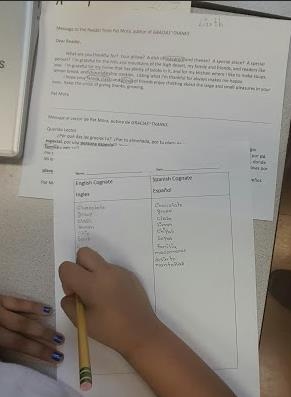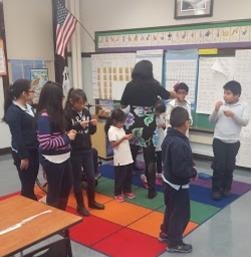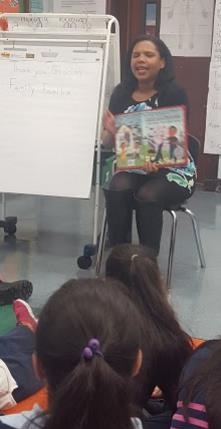|
| |
Teaching Tip: Cognates are Everywhere! Introducing Cognates to Language LearnersValerie Butrón & Margaret McGregor 
Cognates are everywhere! A cognate is a word in one language that shares a similar look, refers to the same thing, and shares the same source as a word in a different language (Montelongo, Hernandez, & Herter, 2014). Many educators may be aware that cognate awareness can propel Spanish-speaking language learners’ reading comprehension in English. Approximately 30 to 40% of all words in English have a related word in Spanish (“Using Cognates to Develop Comprehension in English,” 2016). Students can often access unfamiliar academic terms in English by associating them with the equivalents, or by using knowledge of one language to unlock word meanings in another language (Kelley & Kohnert, 2012; Montelongo, et. al, 2014). Researchers have found that some English Learners do not use their knowledge of their L1 to unlock or connect to the meaning of the English equivalent word. Hence, the recognition of cognates is not an automatic process (Hernández, Montelongo, Delgado, Holguin, & Carmona, 2014; Jiménez, 1997).
 Here we offer some classroom-tested tips to introduce cognates that are found in texts being used for authentic purposes with primary students. It can be helpful to view the instruction of cognates as a concept to integrate within a lesson. Rather than a stand-alone “cognates lesson,” educators can view building cognate awareness as a process that involves engaging, authentic, and comprehensible input over a long period of time. Here we offer some classroom-tested tips to introduce cognates that are found in texts being used for authentic purposes with primary students. It can be helpful to view the instruction of cognates as a concept to integrate within a lesson. Rather than a stand-alone “cognates lesson,” educators can view building cognate awareness as a process that involves engaging, authentic, and comprehensible input over a long period of time.
Cognates can be rich points for discussions about word origins, connective meanings, and often provide an entry point into another language (Montelongo, et. al, 2014). Real fluency with cognates (as with any vocabulary) will come with input, practice and time.
References Fitzgerald, J., & Cummins, J. 1. (1999). Improving schooling for language-minority children (Book Review). Reading Research Quarterly, 34(3), 378-390. Kelley, A., & Kohnert, K. (2012). Is there a cognate advantage for typically developing Spanish-speaking English-language learners? Language, Speech, and Hearing Services In Schools, 43(2), 191-204. Montelongo, J. A., Hernández, A. C., & Herter, R. J. (2014). English-Spanish cognates and the Pura Belpré Children's Award books: Reading the word and the world. Multicultural Perspectives, 16(3), 170-177. Hernández, A.C., Montelongo, J.A., Delgado, R., Holguín, R., & Carmona, L. (2014). Strengthening vocabulary instruction for Latino English Learners: Cognate word walls and anchor charts. New Mexico Journal of Reading, 34(2), 36-40. Montelongo, J.A., Durán, R. & Hernández, A.C. (2013). English-Spanish cognates in picture books: Toward a vocabulary curriculum for Latino ELLs. Bilingual Research Journal, 36(2), 244-259. Using Cognates to Develop Comprehension in English. (2016). Retrieved from http://www.colorincolorado.org/article/using-cognates-develop-comprehension-english  Valerie Butrón is an instructional support specialist at Illinois Center for School Improvement and a child advocate at the Young Center for Immigrant Children’s Rights. Valerie Butrón is an instructional support specialist at Illinois Center for School Improvement and a child advocate at the Young Center for Immigrant Children’s Rights. Margaret McGregor is an instructional leadership/literacy coach in Network 2 of the Chicago Public School system. Margaret McGregor is an instructional leadership/literacy coach in Network 2 of the Chicago Public School system. | |
| ITBE Link - Spring 2016 - Volume 44 Number 1 |
 stories. For example, by thinking aloud, “Sometimes when I’m reading a text in English I notice that some words look or sound very similar to a word I already know in Spanish. That means I’ve probably found a cognate. If I already know what that word means in Spanish, then that will help me understand what I’m reading about in English.”
stories. For example, by thinking aloud, “Sometimes when I’m reading a text in English I notice that some words look or sound very similar to a word I already know in Spanish. That means I’ve probably found a cognate. If I already know what that word means in Spanish, then that will help me understand what I’m reading about in English.”